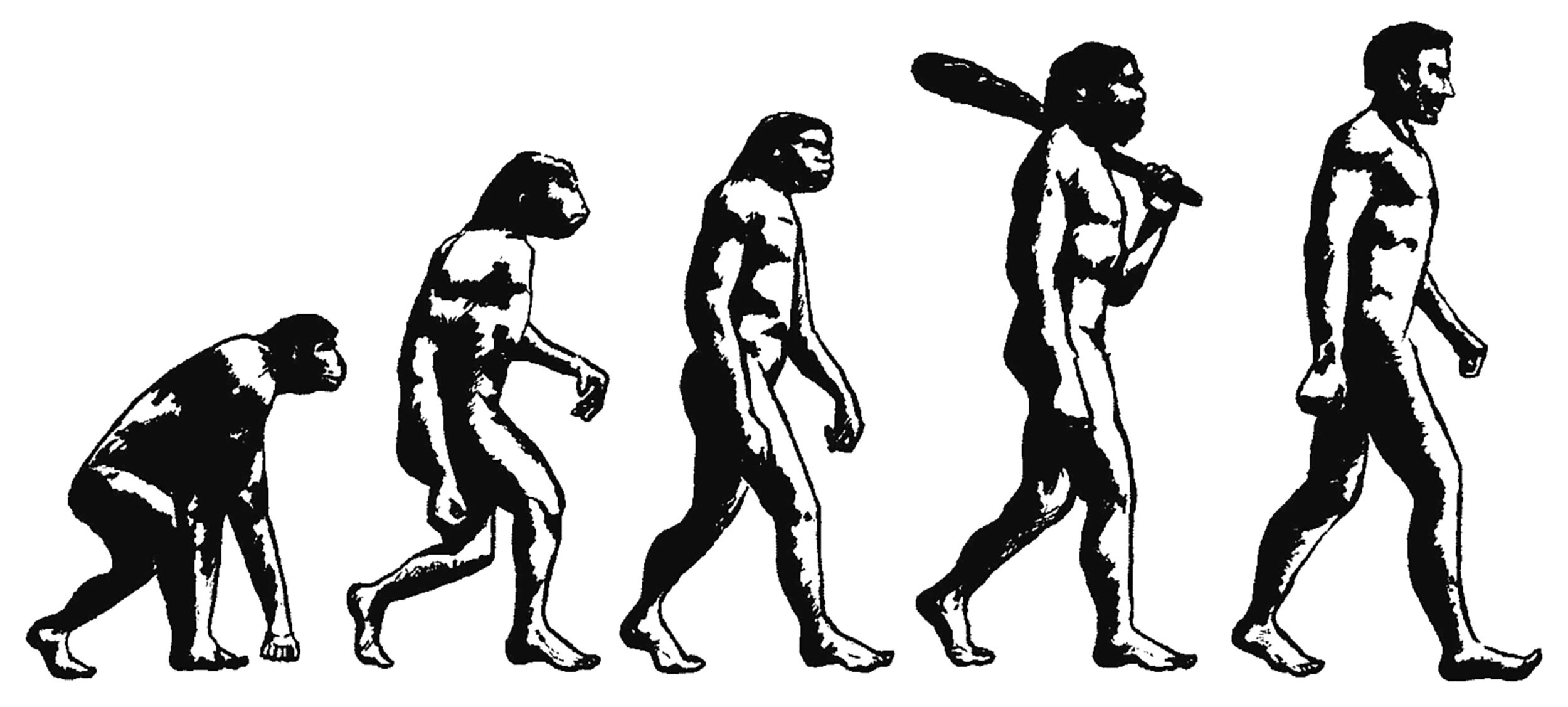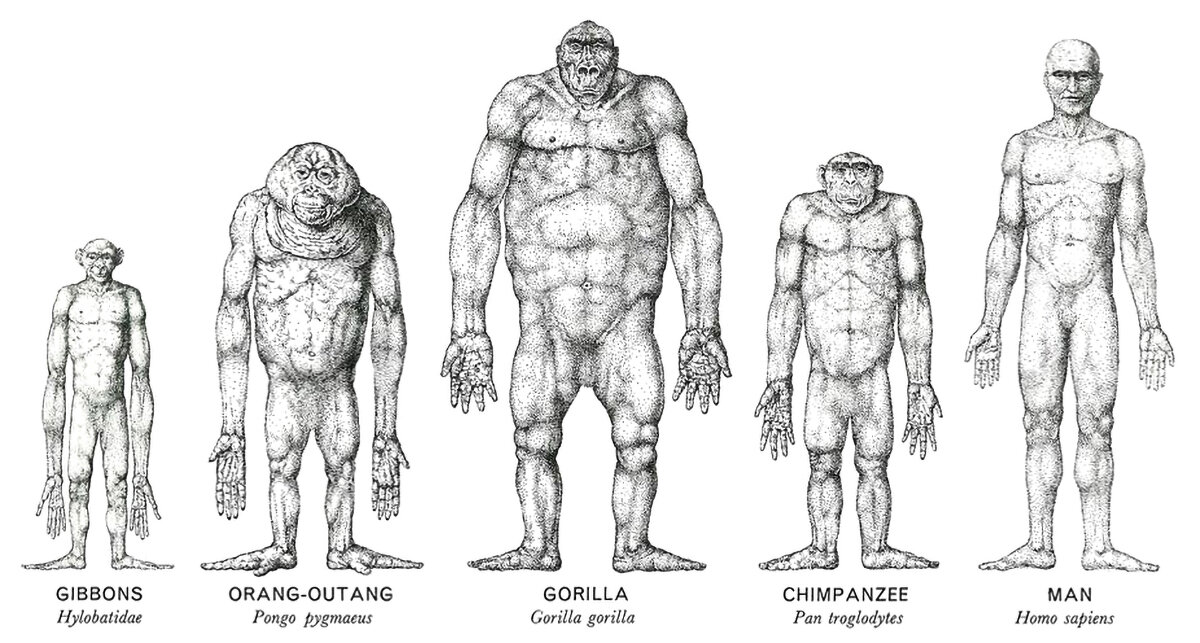Welcome to On Verticality. This blog explores the innate human need to escape the surface of the earth, and our struggles to do so throughout history. If you’re new here, a good place to start is the Theory of Verticality section or the Introduction to Verticality. If you want to receive updates on what’s new with the blog, you can use the Subscribe page to sign up. Thanks for visiting!
Click to filter posts by the three main subjects for the blog : Architecture, Flight and Mountains.

The March of Progress and the Fallacy of Progressive Evolution
Evolution and natural selection are tricky concepts to represent in an illustration. This is partly true because the reality of these processes is so complex and nuanced that some type of simplification is required when introducing them. This is a fine line however, because each concept can easily be over-simplified to the point of confusion. This is exactly what happened with the illustration above. At first glance, it appears to be a simple meme that shows how the human species went from moving on all fours to walking upright, but behind this is a fascinating and painfully unfortunate backstory about the nature of evolution.

A Comparison of Apes and Man
I’ve been watching a few documentaries on chimpanzees lately, and I’m continuously struck by how similar we humans are to our ape cousins. Our body language and social interactions closely relate, as well as our physical bodies. The major distinction between us and our ape cousins is that we walk upright on two legs. The above illustration caught my eye because It compares the human body to other members of the hominoid family, much like a police lineup. This approach is intriguing, because it shows everyone standing upright on two legs. This, along with removing all hair from the bodies, allows for an easy comparison between the species.

Forests and Verticality
The progression of forest growth over time is based on access to and competition for sunlight. This process is based on Verticality. As a plant grows taller, it casts a shadow on everything below its foliage, hindering the growth of smaller plants below. This process can be found throughout the natural world, and it follows a pattern of regrowth called plant succession.

Verticality, Part III: Inception
Our first act of descension and our first act of ascension
Our species evolved within the context described in Part I, and our physical surroundings would provide the foundation for our struggles with Verticality, as described in Part II. These early struggles would be defined by two acts. The first is an act of descension: we came down from the trees and out onto the savannah to become surface-dwellers. We would still carry much of the baggage from tree-dwelling life with us, however. I’ll henceforth refer to this baggage as our source-code. The second is the shift to bipedalism, resulting in our upright, vertical bodies. Together, these two acts would set the stage for the future and our never ending struggle to escape the earth’s surface.
